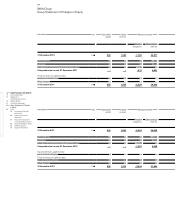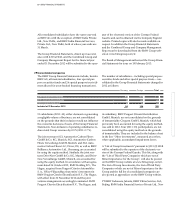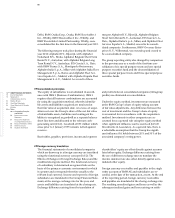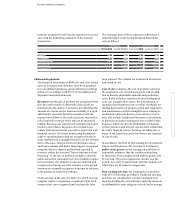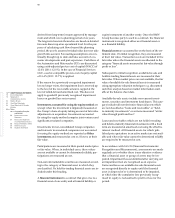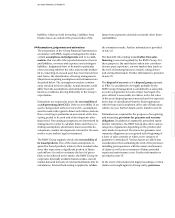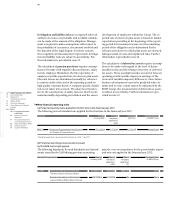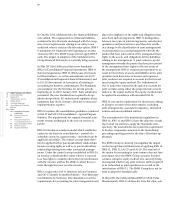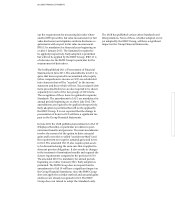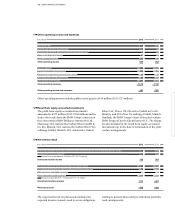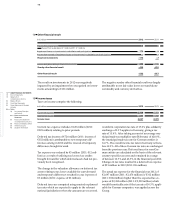BMW 2012 Annual Report Download - page 94
Download and view the complete annual report
Please find page 94 of the 2012 BMW annual report below. You can navigate through the pages in the report by either clicking on the pages listed below, or by using the keyword search tool below to find specific information within the annual report.
94
78 GROUP FINANCIAL STATEMENTS
78 Income Statements
78 Statement of
Comprehensive Income
80 Balance Sheets
82 Cash Flow Statements
84 Group Statement of Changes
in Equity
86 Notes
86 Accounting Principles
and Policies
100 Notes to the Income
Statement
107 Notes to the Statement
of Comprehensive Income
108
Notes to the Balance Sheet
129 Other Disclosures
145 Segment Information
Inventories of raw materials, supplies and goods for
resale are stated at the lower of average acquisition cost
and net realisable value.
Work in progress and finished goods are stated at the
lower of average manufacturing cost and net realisable
value. Manufacturing cost comprises all costs which
are
directly attributable to the manufacturing process
and an appropriate proportion of production-related
overheads. This includes production-related deprecia-
tion and an appropriate proportion of administrative
and social costs.
Borrowing costs are not included in the acquisition or
manufacturing cost of inventories.
Cash and cash equivalents comprise mainly cash on
hand and cash at bank with an original term of up to
three months.
Assets held for sale and disposal groups held for sale
are presented separately in the balance sheet in
accord-
ance with IFRS 5, if the carrying amount of the rele-
vant
assets will be recovered principally through a sale
transaction rather than through continuing use. This
situation only arises if the assets can be sold immediately
in their present condition, the sale is expected to be
completed within one year from the date of
classifica-
tion and the sale is highly probable. At the date of
classification, property, plant and equipment,
intangi-
ble assets and disposal groups which are being held
for
sale are written down to the lower of their carrying
amount and their fair value less costs to sell and sched-
uled depreciation / amortisation ceases. This does not
apply, however, to items within the disposal group which
are not covered by the measurement rules contained
in IFRS 5. Simultaneously, liabilities directly related to
the sale are presented separately on the equity and
liabilities side of the balance sheet as “Liabilities in con-
junction with assets held for sale”.
Provisions for pensions and similar obligations are rec-
ognised using the projected unit credit method in ac-
cordance with IAS 19 (Employee Benefits). Under
this method, not only obligations relating to known
vested benefits at the reporting date are recognised,
but also
the effect of future increases in pensions
and salaries.
This involves taking account of various
input factors which are evaluated on a prudent basis.
The calculation is based on an independent actuarial
valuation which takes into account all relevant bio-
metric factors.
Actuarial gains and losses arising on defined benefit
pension and similar obligations and on plan assets
are recognised, net of deferred tax, directly in equity
(revenue reserves). This accounting treatment is meant
to make it clear that these amounts will not be reclas-
sified
to the income statement in future periods.
The expense related to the reversal of discounting on
pension obligations and the income from the expected
return on pension plan assets are reported separately
as part of the financial result. All other costs relating
to allocations to pension provisions are allocated to costs
by function in the income statement.
Other provisions are recognised when the BMW Group
has a present obligation arising from past events, the
settlement of which is probable and when a reliable
estimate can be made of the amount of the obligation.
Measurement is computed on the basis of fully attribut-
able costs. Non-current provisions with a remaining
period of more than one year are discounted to the pre-
sent value of the expenditures expected to settle the
obligation at the end of the reporting period.
Financial liabilities are measured on first-time recogni-
tion at cost which corresponds to the fair value of the
consideration given. Transaction costs are also taken
into
account except for financial liabilities allocated to the
category “financial liabilities measured at fair value
through profit or loss”. Subsequent to initial recognition,
liabilities are – with the exception of derivative financial
instruments – measured at amortised cost using the
effective interest method. The BMW Group has no


